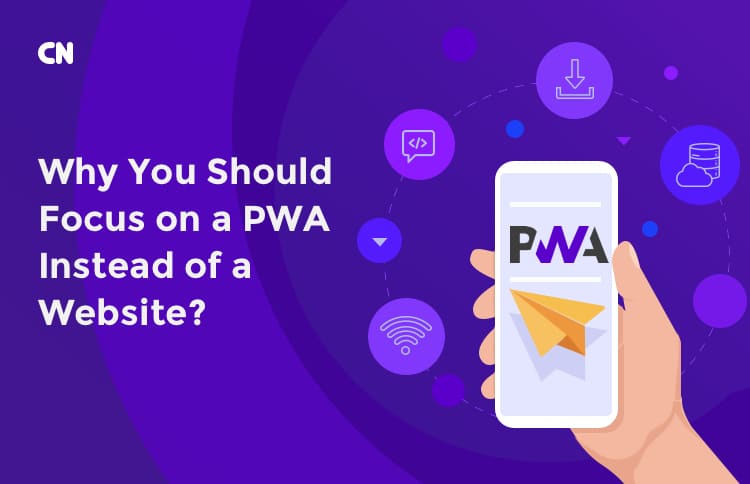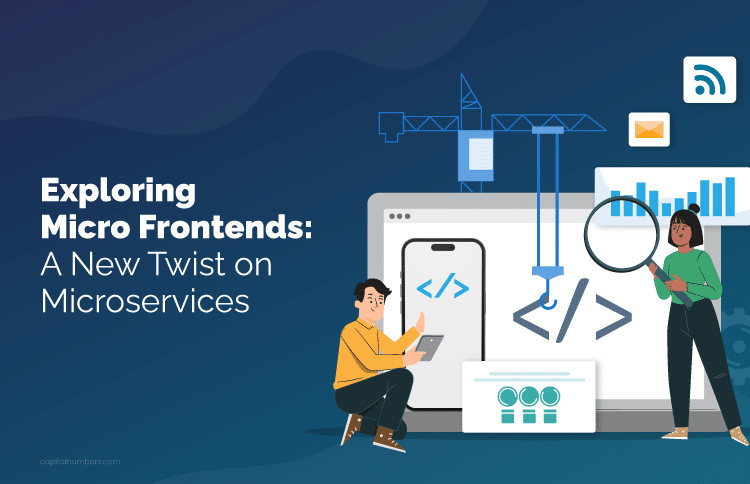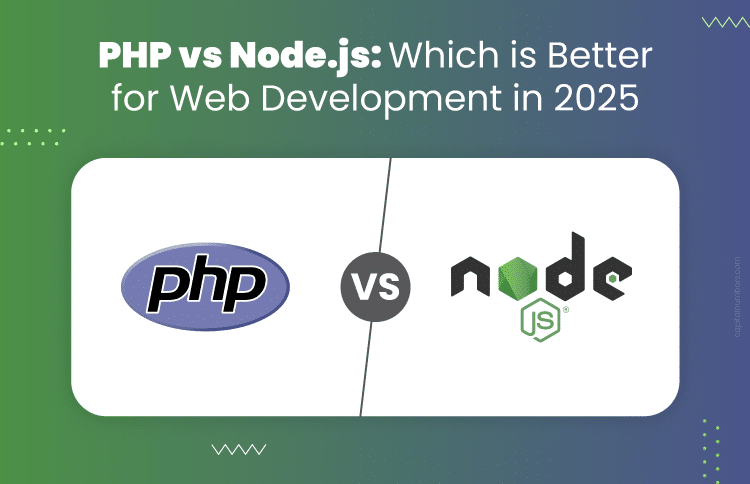Why You Should Focus on a PWA Instead of a Website?
Table of Contents
Not too long ago, you were either building an app for iOS devices or Android.
The world of applications was primarily classified under these two categories.
Until a new acronym entered the space – PWAs or Progressive Web Applications.
So, what’s a PWA and how is it helpful?
Well, we’ve all come across outdated websites that make it difficult for us to navigate across multiple devices. Didn’t we? We’ve also come across responsive websites which may adapt to multiple screen sizes and browsers, but do not fully leverage device functionality, thereby, offering poor user experiences.
This is where PWAs come into play.
Delivering Excellence with PWAs
Progressive Web Applications or PWAs fully leverage the functionality of mobile sites, native apps and responsive websites to offer a seamless, smooth and first-class user experience.
Most mature businesses, as well as startups, turn towards PWAs to keep up with the rising expectations of today’s users while keeping a check on their app development and maintenance costs. In fact, Alibaba has recently stated that while implementing PWAs, they’ve seen a 76% increase in conversion rates across multiple browsers.
Clearly, PWAs are gaining popularity and how!
Today, PWAs are preferred over and above the traditional websites because of the top-notch user experiences that they offer. They’re secure, searchable, fast, feature-rich and offer a really good performance to users on repeat visits.
A quick look at PWA stats will give you a sense of its extensive usage and benefits:
- Trivago saw a 150% increase in engagement for people who add its PWA to their home screens.
- Uber’s PWA was designed to be really fast even on a 2G network.
- Pinterest redeveloped their mobile site as a PWA and found an increase of 60% in its core engagement.
- BookMyShow’s PWA loads within 3 seconds and it saw an increased conversion rate of more than 80%.
Simply put, if you’re thinking of creating an app that truly conveys your brand’s vision in a cost-effective way, go for a PWA instead of a website.
Let’s dig into some of the factors which make PWAs better than websites in terms of speed, functionality, and adaptability.
| Category | Websites | PWAs |
| Speed | Websites often depend on real-time data transfers for delivering ‘on-demand’ information to its users. This can lead to extremely slow page refreshes and incomplete loads. The result? Poor browsing experience that can frustrate users. | PWAs can cache data and work offline. They offer super-fast user experience even in low and no connectivity networks. PWAs can also offer improved search ranks, thanks to their blazing-fast speed. |
| Functionality | Websites are usually unable to leverage mobile device capabilities. Creating a website that’s perfectly compatible with multiple browsers and screen sizes is a lofty and time-consuming task. | PWAs make the most of browser-specific improvements like push notifications and leverage mobile capabilities like GPS for location and camera compatibility. Moreover, they even provide content offline and work perfectly on multiple devices and browsers, thereby, paving the way for top-class user experience. |
| A2HS-ready* | We’ve often seen that website, iOS and Android shortcuts to Home Screens look ugly and poor, and they often take time to load, clearly, offering a bad user experience. | On the other hand, PWAs are A2HS-ready. That is, users can conveniently add PWA shortcuts to their Home Screens (both on desktops and on mobiles) and get a full-fledged native-app experience (and a quick load time) with a single tap on the PWA icon. This, undoubtedly, gives PWAs an edge over the rest. |
Although responsive websites have bridged the gap between mobile and desktop experiences, PWAs empower businesses to build a single web property that scales and adapts as and when technology evolves.
PWAs are not only ‘progressive’, they’re also cutting-edge that helps resolve multiple issues that businesses face on a regular basis.
Business Problems that PWAs Help Resolve
- The need to develop apps for diverse platforms – Since browsers like Chrome, Firefox and Opera support PWAs, businesses need not go for specialized app development for various platforms.
- Mobile apps are not easily searchable – A big obstacle to mobile app adoption is that they do not easily come up in search results. PWAs, on the other hand, creates and enhances opportunities for new user acquisition. They are easily searchable and shareable which gives businesses better visibility across multiple user groups.
- Re-engagement and timely communication are taxing – PWAs could be added to home screens, which help users get real-time push notifications on the latest offers, discounts, sales or even abandoned carts.
- Mobile sites may often not be user-friendly – Although mobile sites are optimized for device-driven experiences, however, they may often be too slow which tests users’ patience. PWAs create an interactive and faster way for users to connect with a business. At a time when 53% of users tend to abandon a site if it takes over 3 seconds to load, PWAs are of utmost importance.
In Closing
If businesses are looking to bring down long term costs and combat poor mobile experience, they must upgrade to PWAs. Improved performance (as against the traditional websites), simplified communication with customers and elimination of overhead are just some of the benefits that PWA adoption can offer.
If you’re truly interested in providing a frictionless user experience, maximize the full potential of PWAs and see the results for yourself.
*A2HS – Add to Home Screen














